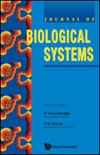光锁对湖泊藻类生物量减缓影响的最优控制模型
IF 1.5
4区 数学
Q3 BIOLOGY
引用次数: 1
摘要
在这项研究中,我们研究了农田和家庭向湖泊中过量输入生物可利用磷对藻华形成的影响,以及使用镧改性粘土Phoslock作为生物可利用的磷吸附剂对其进行潜在管理的可能性。在测量了湖中藻类生物量的密度后,我们还研究了应用Phoslock过程中所涉及的时间延迟的影响。此外,还研究了农田生物有效磷输入和Phoslock施用率的季节效应。我们的模拟结果表明,如果生物可利用磷通过农业径流和家庭排放过量,藻类生长就会加速。然而,通过大量使用Phoslock可以有效地控制藻类生物量。此外,我们发现Phoslock应用的延迟会导致极限循环振荡。此外,我们的研究结果表明,Phoslock应用中的延迟和周期性的联合作用通过产生更高的周期解和爆发模式,带来了湖泊系统的动力学复杂性。最后,我们研究了一个最优控制问题,以估计Phoslock缓解湖泊系统藻类生物量的最佳剂量。本文章由计算机程序翻译,如有差异,请以英文原文为准。
AN OPTIMAL CONTROL MODEL FOR THE IMPACT OF PHOSLOCK ON THE MITIGATION OF ALGAL BIOMASS IN LAKES
In this study, we investigate the effects of excessive inputs of bioavailable phosphorus into a lake from agricultural fields and households on algal bloom formation, and its potential management by using the lanthanum-modified clay Phoslock as a bioavailable phosphorus adsorbent. We also investigate the impact of time delay involved in the process of applying Phoslock after measuring the density of algal biomass in the lake. Moreover, the seasonal effects in the input of bioavailable phosphorus from the agricultural lands and the application rate of Phoslock have been investigated. Our simulation results show that the algal growth accelerates if the bioavailable phosphorus is excessively loaded through agricultural runoff and domestic discharges. However, algal biomass can be effectively controlled by employing Phoslock in a sufficiently large quantity. Further, we find that a delay in the application of Phoslock induces limit cycle oscillations. Furthermore, our findings show that the combined actions of delay and periodicity in the application of Phoslock bring forth dynamical complexity in the lake system by giving rise to higher periodic solutions and bursting patterns. Lastly, we investigate an optimal control problem to estimate the optimum dosage of Phoslock for the mitigation of algal biomass from the lake system.
求助全文
通过发布文献求助,成功后即可免费获取论文全文。
去求助
来源期刊
CiteScore
2.80
自引率
12.50%
发文量
31
审稿时长
1 months
期刊介绍:
The Journal of Biological Systems is published quarterly. The goal of the Journal is to promote interdisciplinary approaches in Biology and in Medicine, and the study of biological situations with a variety of tools, including mathematical and general systems methods. The Journal solicits original research papers and survey articles in areas that include (but are not limited to):
Complex systems studies; isomorphies; nonlinear dynamics; entropy; mathematical tools and systems theories with applications in Biology and Medicine.
Interdisciplinary approaches in Biology and Medicine; transfer of methods from one discipline to another; integration of biological levels, from atomic to molecular, macromolecular, cellular, and organic levels; animal biology; plant biology.
Environmental studies; relationships between individuals, populations, communities and ecosystems; bioeconomics, management of renewable resources; hierarchy theory; integration of spatial and time scales.
Evolutionary biology; co-evolutions; genetics and evolution; branching processes and phyllotaxis.
Medical systems; physiology; cardiac modeling; computer models in Medicine; cancer research; epidemiology.
Numerical simulations and computations; numerical study and analysis of biological data.
Epistemology; history of science.
The journal will also publish book reviews.

 求助内容:
求助内容: 应助结果提醒方式:
应助结果提醒方式:


